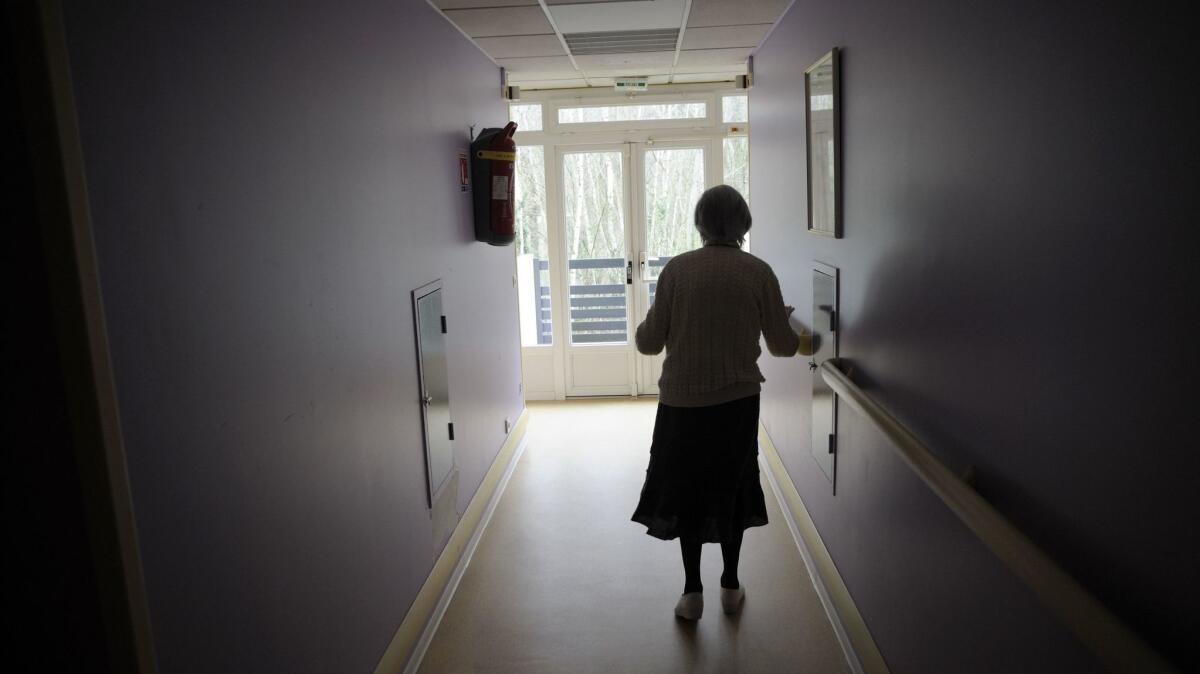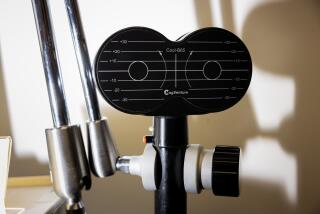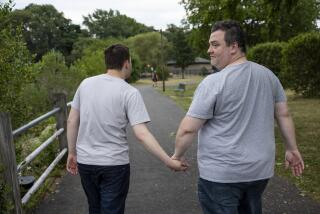Light and sound stimulus therapy generates a buzz in Alzheimer’s research world

- Share via
The often-discouraging search for ways to prevent or treat Alzheimer’s disease may have flickered to life this week with a bright new idea — and a buzzy new soundtrack as well.
In experiments conducted on mice, scientists used light and sound to orchestrate a series of episodes that were marked by an unusual state of electronic synchrony inside the animals’ brains. Prompted by a gently flickering light and a pulsating buzz — both timed to fire 40 times per second — their brains began to hum to the same frequency.
The results, published this week in the journal Cell, are already yielding some powerful insights about what may go wrong in Alzheimer’s disease, and how that process might be halted or reversed.
Experts said the new research could spawn a new class of medical devices that treat Alzheimer’s in ways that experimental drugs have so far failed to.
Whether the strategy, called gamma oscillation entrainment, is as effective in people as it appears to be in mice will soon be tested in patients with mild to moderate disease symptoms. It will also be tried on people with mild cognitive impairment, a condition that is often a prelude to Alzheimer’s.
Those trials are sponsored by Cognito Therapeutics, a start-up co-founded by MIT neuroscientist Li-Huei Tsai, the senior author of the new study.
Cognito President Zach Malchano said the company’s first three trials will explore the therapy’s safety as well as its effectiveness. He hopes to run those trials, and present their early findings, within the next year.
Next would come a large-scale trial of “gamma stimulation therapy” using a wearable device that would let subjects administer the experimental treatments themselves, Malchano said.
The success of the new strategy in humans is a big if, Tsai acknowledged. When it comes to treating brain diseases, plenty of therapies that worked in mice have not proven effective in people.
“The record is not good,” said Tsai, who directs MIT’s Picower Institute for Memory and Learning.
But this strategy has an advantage that drugs, implants and surgical procedures do not, she said: Without ever breaching the skin, it appears to recruit special cells to do their healing work inside the brain. In thousands of mice, there’s been no evidence of unwanted side effects, she added.
The new research builds on earlier efforts by Tsai’s lab to use a technique called optogenetics and then visual stimulation to prompt gamma wave synchrony and correct faulty signaling in the brain. It worked, but only in the visual cortex, which isn’t typically under attack in Alzheimer’s.
Flickering lights may illuminate a path to Alzheimer’s treatment »
In the new study, researchers added acoustic stimulation that pulsed at the same frequency as the visual stimulation. And when mice — which were bred to develop Alzheimer’s-like symptoms — were exposed to both, researchers saw that the neurons in several of their brains’ key memory circuits chimed in and began humming along at exactly the same frequency.
What came next was remarkable and unexpected, even to the authors of the study.
In the wake of the sound and light sessions, an army of newly energized immune cells descended on several areas of the treated brains, including those most affected by dementia. Then they set to work with a vengeance on some neglected housecleaning.
Normally idle as Alzheimer’s disease takes hold, these debris-clearing cells, called microglia, began vacuuming up the sticky plaques and tangles of protein that gum up the brains of those with the memory-robbing disorder.
“The microglia looked totally different,” Tsai said. “The cell bodies looked larger, the cell body was more complex and we saw more amyloid-beta protein inside the microglia.”
In some structures, the number of amyloid plaques in the brains of treated mice was reduced by more than half compared to mice that didn’t get the stimulation treatment. In treated mice, researchers also saw improvements in the state of blood vessels in the brain, which had become weak and leaky. Brain regions that had begun to shrink and falter were pinking up again.
These changes occurred not just in the brain regions that were on the receiving end of the stimulation, the visual and auditory cortices. They were happening in more far-flung brain regions that sputter and fail in Alzheimer’s and in several other brain diseases: the hippocampus (key to memory formation, storage and retrieval) and the prefrontal cortex (the seat of attention, judgment and higher-order reasoning).
After a week of spending an hour a day in the presence of sound and light thrumming away at a frequency of 40 hertz, mice who had been deep in the throes of dementia — animals who had begun to lose their way in once-familiar mazes — regained their ability to recognize forgotten guideposts and find their way to rewards.
“It’s a beautiful study,” said neuroscientist Michael M. Merzenich, an emeritus professor at UC San Francisco who was not involved in the research. The results may help identify some of the most powerful dynamics in brain health, he said.
The study’s central finding — that inducing electrical synchrony touched off such a widespread range of effects — suggests there might be a single key lever that can preserve or restore order in brains made “noisy” by age and disease. Merzenich called it a “magical switch.”
Some behavioral interventions show promise in flipping that switch and releasing that cascade, said Merzenich, who is now the chief scientific officer of Posit Science, which designs and markets a range of brain-training programs. But still, no one knows how.
Drug designers have hoped to throw that switch chemically, so far without success.
“Here, they’ve done it mechanically,” Merzenich said. ”And that’s really cool.”
USC Alzheimer’s specialist Dr. Lon Schneider said the new work adds another promising strategy to a growing array of behavioral interventions and device-based therapies on which many patients are pinning their hopes.
In addition to nutrition, music therapy, brain training and social engagement, patients keen to forestall dementia are trying transcranial magnetic stimulation, focused ultrasound, vagus nerve stimulation and electroconvulsive shock therapy.
Some may help just a little. But because many are less invasive, patients may feel more comfortable trying them, Schneider said.
As researchers learn more about whether, why and how they work, they may find certain combinations — or even new strategies — that work better together, he said.
MORE IN SCIENCE







